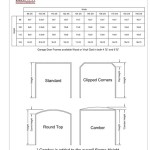How To Stain a Concrete Garage Floor
Staining a concrete garage floor is a cost-effective and aesthetically pleasing way to enhance its appearance and durability. Unlike epoxy coatings, staining penetrates the concrete surface, creating a permanent color that won't peel or chip. The process involves several crucial steps, from preparation to sealing, each playing a vital role in the final outcome and longevity of the stained floor.
This article provides a detailed guide on how to properly stain a concrete garage floor, covering the necessary materials, preparation techniques, staining application methods, and sealing procedures. Following these instructions carefully will help achieve a professional-looking and enduring result.
Key Point 1: Prepping the Concrete Surface for Staining
Proper preparation is paramount to a successful concrete staining project. The concrete surface must be clean, porous, and free of any existing coatings, sealers, or contaminants. Inadequate preparation will significantly impact the stain's ability to penetrate and bond with the concrete, leading to uneven coloration and premature failure.
The first step is to thoroughly clean the floor. This involves removing all debris, such as dirt, dust, oil, grease, and paint. Sweep or vacuum the entire area to eliminate loose particles. For oil and grease stains, a degreasing agent specifically designed for concrete should be used. Apply the degreaser according to the manufacturer's instructions, scrub the affected areas with a stiff brush, and rinse thoroughly with water.
Once the floor is clean, it's essential to remove any existing coatings or sealers. Mechanical abrasion is the most effective method for achieving this. This can be accomplished using a concrete grinder equipped with a diamond grinding wheel. The grit of the grinding wheel will depend on the type and thickness of the existing coating. Start with a coarser grit to remove the bulk of the coating and then gradually decrease the grit to achieve a smooth, uniform surface. It's crucial to wear appropriate safety gear, including a dust mask or respirator, eye protection, and ear protection, during the grinding process. A vacuum system attached to the grinder will help minimize dust and maintain a cleaner work environment.
An alternative to grinding is chemical etching, which involves applying an acidic solution to the concrete surface to open the pores and create a suitable profile for staining. Muriatic acid or phosphoric acid are commonly used for this purpose. Always follow the manufacturer’s safety precautions when handling acids. Wear gloves, eye protection, and protective clothing. Dilute the acid according to the manufacturer's instructions and apply it evenly to the concrete surface. Allow the acid to react for the recommended time, typically 10-15 minutes, then scrub the surface with a stiff brush. Rinse the floor thoroughly with water and neutralize any remaining acid with a solution of baking soda and water. Rinse again until the water runs clear.
After cleaning and etching or grinding, perform a water absorption test to ensure the concrete is sufficiently porous. Pour a small amount of water onto the surface and observe how quickly it is absorbed. If the water beads up or remains on the surface for an extended period, the concrete is not porous enough and further preparation may be required. This might involve additional etching or grinding.
Finally, thoroughly rinse and dry the floor before proceeding to the staining application. Allowing the floor to dry completely is crucial to ensure proper stain penetration and even color distribution.
Key Point 2: Selecting and Applying the Concrete Stain
Choosing the right type of concrete stain and applying it correctly are critical factors in achieving the desired aesthetic and durability. There are two primary types of concrete stains: acid-based and water-based. Each type offers unique characteristics and application requirements.
Acid-based stains react chemically with the concrete, creating a mottled, variegated appearance. They penetrate deeply into the concrete, resulting in a permanent color that is resistant to fading and chipping. Acid stains are known for their durability and natural-looking finish. However, they can be challenging to apply evenly and require careful neutralization after application due to their acidic nature. They also offer a more limited color palette, typically in earth tones.
Water-based stains, on the other hand, use pigments to color the concrete. They are easier to apply and offer a wider range of colors and shades. Water-based stains are also more environmentally friendly and safer to use than acid-based stains. However, they do not penetrate as deeply into the concrete, making them less durable and more susceptible to fading and wear, particularly in high-traffic areas. To improve durability, a high-quality sealer is essential.
Before applying the stain, it is advisable to test it in an inconspicuous area to ensure the desired color and effect are achieved. This will prevent unwanted surprises and allow for adjustments in application techniques or stain dilution.
When applying the stain, use appropriate tools and techniques. For acid-based stains, a chemical-resistant sprayer is recommended. Evenly saturate the concrete surface with the stain, avoiding puddles or drips. Multiple thin coats are generally preferable to a single heavy coat, as this will help prevent uneven coloration. Allow the stain to react with the concrete according to the manufacturer's instructions. For water-based stains, a brush, roller, or sprayer can be used. Apply the stain in thin, even coats, allowing each coat to dry completely before applying the next. The number of coats will depend on the desired color intensity.
For acid-based stains, once the stain has reacted sufficiently, neutralize the surface with a solution of baking soda and water. Scrub the floor with a stiff brush and rinse thoroughly with water until the water runs clear. Allow the floor to dry completely before applying a sealer.
Regardless of the type of stain used, proper ventilation is crucial during application and drying. Open windows and doors to ensure adequate airflow. Wear appropriate safety gear, including gloves, eye protection, and a respirator, to protect against exposure to stain fumes and chemicals.
Consider using stencils or tape to create patterns or designs on the floor. Apply the stain according to the manufacturer’s instructions, being careful to avoid bleeding under the stencils or tape. Remove the stencils or tape once the stain has dried.
Key Point 3: Sealing the Stained Concrete Floor
Sealing the stained concrete floor is essential to protect it from damage, enhance its appearance, and extend its lifespan. A sealer creates a protective barrier that prevents water, oil, and other contaminants from penetrating the concrete, making it easier to clean and maintain. It also enhances the color of the stain and provides a glossy or matte finish, depending on the type of sealer used.
There are several types of concrete sealers available, each with its own characteristics and benefits. Acrylic sealers are a cost-effective option that provides good protection against water and stains. They are easy to apply and come in a variety of finishes, from matte to glossy. However, acrylic sealers are not as durable as other types of sealers and may require more frequent reapplication.
Polyurethane sealers offer excellent durability and resistance to abrasion, chemicals, and UV light. They are ideal for high-traffic areas, such as garage floors. Polyurethane sealers are available in both water-based and solvent-based formulations. Solvent-based polyurethane sealers are more durable but emit stronger fumes and require more careful application. Water-based polyurethane sealers are more environmentally friendly and easier to apply.
Epoxy sealers are extremely durable and resistant to chemicals and abrasions. They provide a hard, glossy finish that is ideal for garage floors. Epoxy sealers are typically more expensive than acrylic or polyurethane sealers and require more specialized application techniques.
Before applying the sealer, ensure the stained concrete floor is completely dry and free of any dust or debris. Follow the manufacturer's instructions for the specific type of sealer being used. Typically, the sealer is applied in thin, even coats using a roller or sprayer. Avoid applying too much sealer, as this can cause bubbling or clouding. Allow each coat to dry completely before applying the next.
The number of coats of sealer required will depend on the type of sealer and the level of protection desired. Generally, two coats are recommended for most applications. For high-traffic areas or areas exposed to harsh chemicals, three or more coats may be necessary.
After applying the sealer, allow it to cure completely before using the garage floor. The curing time will vary depending on the type of sealer and the environmental conditions. Follow the manufacturer's recommendations for curing time. Avoid walking on the floor or placing heavy objects on it during the curing process.
Regular maintenance is essential to keep the sealed concrete floor looking its best. Sweep or vacuum the floor regularly to remove dirt and debris. Clean spills immediately to prevent staining. Use a mild detergent and water to clean the floor as needed. Avoid using harsh chemicals or abrasive cleaners, as these can damage the sealer. Reapply the sealer as needed, typically every 1-3 years, to maintain its protective properties.
Consider adding a non-slip additive to the sealer to improve traction, especially in areas that may become wet. This is particularly important in garages where water or oil spills are likely.
By following these steps carefully, a durable, aesthetically pleasing, and long-lasting stained concrete garage floor can be achieved, significantly enhancing the value and functionality of the space.

Staining A Concrete Floor Is Easy Just Follow Our Step By Tutorial

A Diy Guide To Acid Stained And Color Dyed Garage Floors All

How To Stain And Seal Garage Floor

Concrete Stain Or For Garage Floors Best

How To Pimp Your Garage Floor On A Budget

Deltadye Water Based Concrete Stain Is Better Than Acid All Garage Floors

Concrete Stain Long Island Infinity Floors Best Contractor In The Tri State

How To Acid Stain Concrete Floors Create Easy Care With Style

Concrete Staining Garage Floor Protek Painters

Expert Stained Concrete Contractor Transform Your Surfaces
Related Posts








